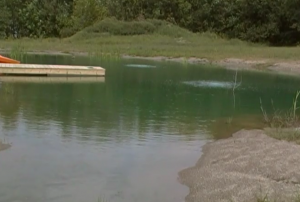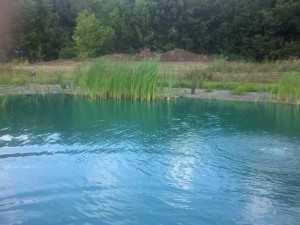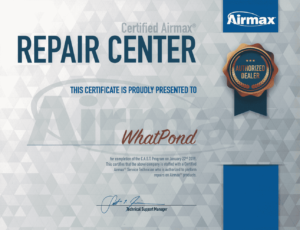 How to Kill cattails and or controlling cattails could be a full time job as these guys are fairly aggressive with a root system that pops up a new stalk just about anywhere.
How to Kill cattails and or controlling cattails could be a full time job as these guys are fairly aggressive with a root system that pops up a new stalk just about anywhere.
Cattails may take their time getting to your pond or show up in the first year. These guys don’t take long once they start and can become a real nuisance in a short time. But on the other hand they are good in a way, the small fish have a place to hide from their predators, birds nest in them, help break the water for erosion control and a safe haven for the smallest of bugs to help with the food chain of the pond even frogs use them for their hang out. Another useful aspect is to help control geese, with a width of 2-3 feet from the pond to the shore the geese will not want to tread through them in fear of predators.
So Cattails are useful in the whole scheme of things but when or how much is enough? Depends on the pond owner.  Personally it is free aquatic plant you don’t have to buy and spend the time planting, they come back every year, can be used as shade for the pond. Over the years I’ve let them go as they see fit cattails over growing.
Personally it is free aquatic plant you don’t have to buy and spend the time planting, they come back every year, can be used as shade for the pond. Over the years I’ve let them go as they see fit cattails over growing.
Ok on with how to kill cattails, starting by hand, shovel, cutting below the high water line and with machine. Using the Pond Weed Cutter we could wait just before winter and cut the cattails below water level. This will help next year to slow down the growth because the cut off stock below the water can’t receive oxygen, and be sure to get rid of the dead decaying stalks and seed heads that are in the water with the Pond Rake . Leaving the seeds and stalks to decay, create more unwanted  nutrients for more cattails, algae food and muck. Caution: when removing and dumping the cattails be sure to put them in an area where the wind won’t blow them or the seeds back into the pond. Or let dry out and burn them if it is legal in your area, even use for compost.
nutrients for more cattails, algae food and muck. Caution: when removing and dumping the cattails be sure to put them in an area where the wind won’t blow them or the seeds back into the pond. Or let dry out and burn them if it is legal in your area, even use for compost.
Using a machine such as a backhoe can be very effective in removing cattails along with their root system. Be sure the pond does not have a synthetic liner or only having a thin clay liner because with each scoop of the bucket you’ll be removing some of the clay in order to actually remove these roots.
These are the safest ways without using chemicals or taking a chance of harming the environment. With that said there are chemical ways of dealing with them. Although effective in controlling them we need to watch we don’t harm wildlife, other wanted plants and our drinking water supply. Caution, some states do not allow the use of chemicals and other state you’ll need a permit to apply chemicals.
Check out another product for cattails, non chemical way of control and killing them on our Lake Blanket Page.
Be sure to watch the video below…
The Chemical You see in the video is no longer available!

